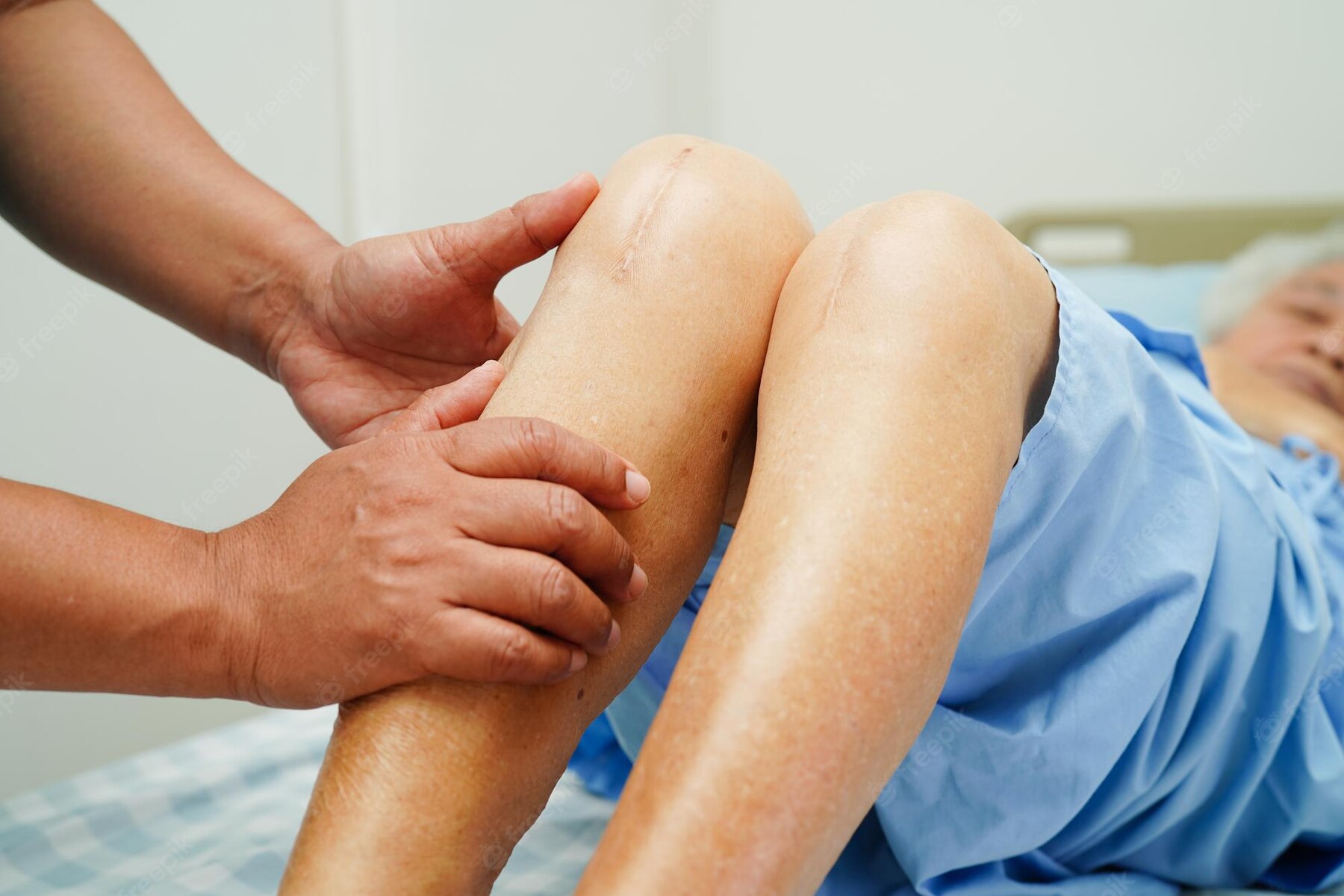Benefits of Knee Replacement Surgery
- Relief from Pain
- Gain Stability and Mobility
- Fast Recovery
- Walking after 4-5 hrs of surgery and staircase climbing from next day of surgery.
- Minimal blood loss during the surgery
- Short hospital stay 2 to 4 days.
What you can expect before the procedure
Knee replacement surgery requires anesthesia. Your input and preference help the team decide whether to use general anesthesia, which makes you unconscious, or spinal anesthesia, which leaves you awake but unable to feel pain from your waist down.
You’ll be given an intravenous antibiotic before, during and after the procedure to help prevent post-surgical infection. You might also be given a nerve block around your knee to numb it. The numbness wears off gradually after the procedure.
During the procedure
Your knee will be in a bent position to expose all surfaces of the joint. After making an incision about 6 to 10 inches (15 to 25 centimeters) long, your surgeon moves aside your kneecap and cuts away the damaged joint surfaces.
After preparing the joint surfaces, the surgeon attaches the pieces of the artificial joint. Before closing the incision, he or she bends and rotates your knee, testing it to ensure proper function. The surgery lasts about two hours.
After the procedure
You’ll be taken to a recovery room for one to two hours. How long you stay after surgery depends on your individual needs. Many people can go home that same day. Medications prescribed by your doctor should help control pain.
You’ll be encouraged to move your foot and ankle, which increases blood flow to your leg muscles and helps prevent swelling and blood clots. You’ll likely receive blood thinners and wear support hose or compression boots to further protect against swelling and clotting.
You’ll be asked to do frequent breathing exercises and gradually increase your activity level. A physical therapist will show you how to exercise your new knee. After you leave the hospital, you’ll continue physical therapy at home or at a center.
Do your exercises regularly, as instructed. For the best recovery, follow all of your care team’s instructions concerning wound care, diet and exercise.
There are three primary types of knee replacement surgeries:
- Total Knee Replacement: Total knee replacement surgery involves replacing the entire knee joint, including the surface of the thigh bone, the surface of the shin bone, and the kneecap with prosthetic components. This surgery is typically performed for severe arthritis or degenerative joint disease.
- Partial Knee Replacement: Partial knee replacement, also known as unicompartmental knee replacement, involves replacing only the affected part of the knee joint with prosthetic components. This surgery is typically performed when only one part of the knee joint is affected by arthritis or degenerative joint disease.
- Revision Knee Replacement: Revision knee replacement surgery is performed when a previous knee replacement has failed or has worn out. The surgeon will remove the old prosthetic components and replace them with new ones.
In addition to these three primary types, there are also various techniques used in knee replacement surgeries, such as minimally invasive surgery and computer-assisted surgery, which are intended to reduce post-operative pain and improve outcomes.
The choice of the type of knee replacement surgery depends on the individual’s specific condition, and the surgeon will make the appropriate recommendation based on the patient’s condition and medical history.

